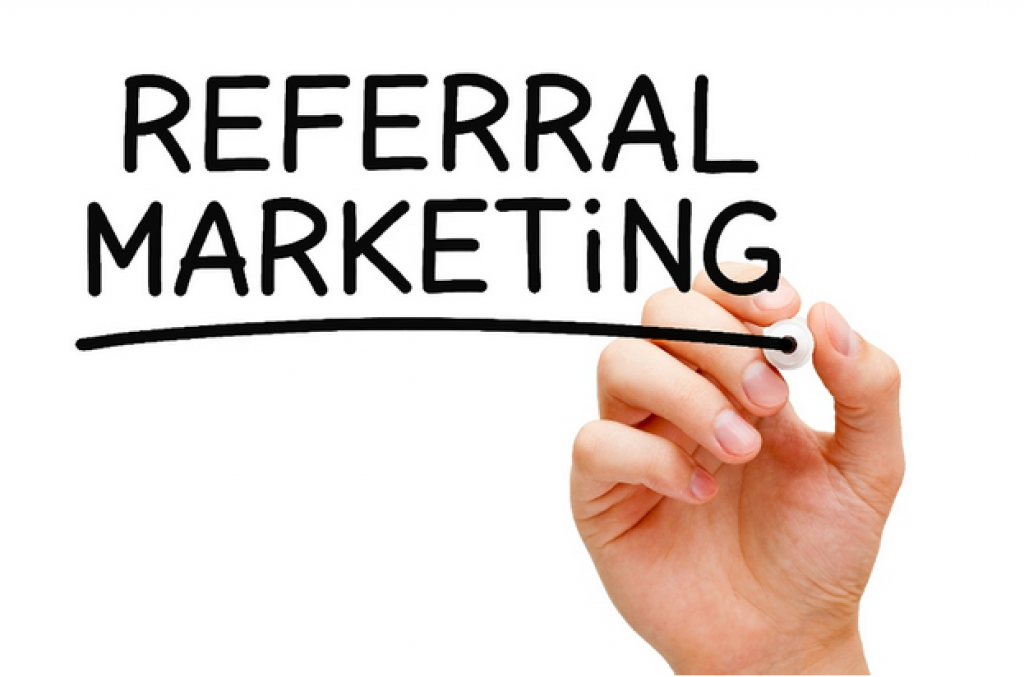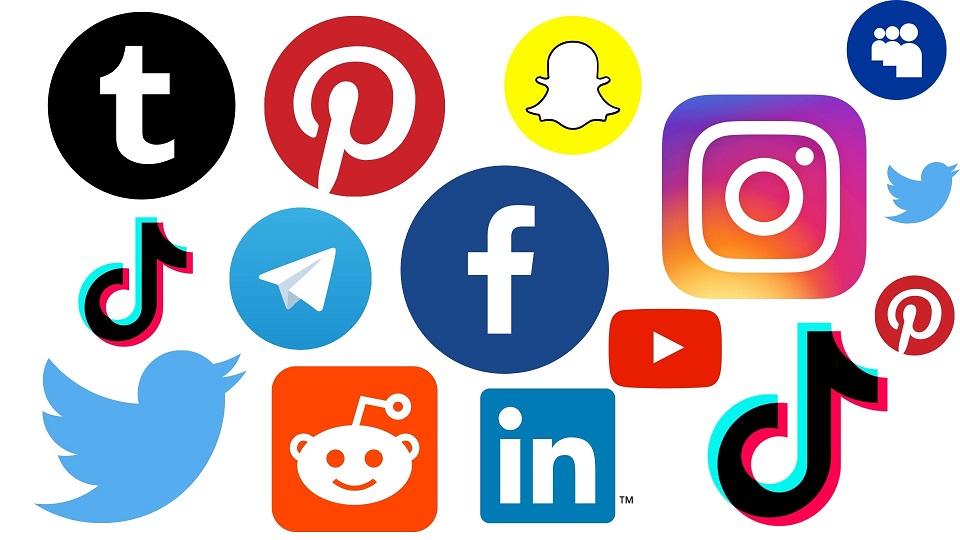17 Surprising Referral Marketing Statistics

My friend Referral Marketing Statistics and sold swords on military bases for a living. Yes, people really do that. By swords I mean giant stainless steel blades that were used in movies like Braveheart, Lord of the Rings and Game of Thrones.

In front of the booth was a shelf holding five sheets, the tips jammed into the wooden container like The Sword in the Stone. He couldn’t help but notice her sales display.
The swords were, um, impressive.
But they were expensive. And being a soldier is not the best paid job there is. While he sold many swords, many of the troops he would sell to on base didn’t trust him enough to spend $500 on a piece of steel after a 20-minute conversation. After all, he had coolly approached them as they passed his post.
Of course, sellers do not close all sales. But those who escaped always had a parting question:
“Do me a personal favor, will you? Ask your friends about sword types. See if you know anyone who has heard of us…”
This was a money tactic. Because now the soldiers were requesting references for us. Not only were they telling their friends about the sword guys, but any social proof of previous sales would surely come up in conversation.
At the end of each workweek on base, he always picked up at least 10 sales from servicemen and women who had come to talk to their friends. Their friends had convinced them to buy.
Why? Because his friends had already made a purchase with him and loved his swords. It was worth the money, they said. You can trust these guys.
Those 10 extra offers were your bonus money. I could always count on them to beat the quota.
This is why referral marketing is so powerful…
People are 4x more likely to buy when referred by a friend.
-Nielson _
A referral program will do the same for you. It’s common business knowledge that referred customers act as valuable brand ambassadors, drive more conversions, close faster, and have a higher CLV than others. According to the Wharton School of Business:
The lifetime value for a new referred customer is 16% higher than non-referred ones.
With the rise of digital channels, word of mouth marketing strategies have become easier to adopt. After all, people repeatedly talk about their purchases among their peers. When consumers share information to help others in a win-win way, your brand can directly benefit through a referral program.
How is that?
Expect higher customer engagement, higher conversions, lower abandon rates, increased customer loyalty, and increases in revenue from referral marketing. I’m about to go over 17 referral marketing statistics that will show you just how effective your referral program can be.
Let’s try it!
92% of respondents trusted referrals from people they knew.
-Nielson _
There is more and more noise in today’s market, more information competing for our time and mental space. We humans have looked to our closest network for solutions, and as your brand builds more and more relationships, the result will be more (and more valuable) referrals.
But how quickly and often this happens is a matter of scale and scope. And within the massive online space, opinions shared on social media and through social media influencers are now crucial areas for brands to consider.
Referral programs accelerate the rate at which your brand is shared, discussed, and purchased.
Social networks generated 31% of the total traffic to the sites.
-Shareholic _
Yes, consumers are following social media cues and turning to their trusted platforms recently for guidance. What can your brands do to capitalize on this? Ask yourself who is motivated to refer you to new business and create rewards that are attractive to those influential customers.
Educating consumers about referral programs and showing them the value of sharing your product or service with their friends will increase the number of referral conversions your brand sees.
The best companies that take advantage of referral marketing, like Evernote or Dropbox, also have referral programs built into their websites, so content sent to users on all platforms generates potential referral marketing benefits.
83% of consumers are willing to recommend after a positive experience, but only 29% do.
– Texas Tech University
But referral programs don’t run on their own. And referred customers don’t just show up without asking for them.
Of course, not all programs are created equal, and best practices are not standard. Like all swords they don’t stay sharp without sharpening. Choosing the right tool for the job and tailoring it to your organization is how you can scale up a referral campaign strategy.
According to Heinz Marketing:
When marketing manages the program, companies were 3 times more likely to achieve revenue targets.
However, only 10% of companies have taken care of marketing with referral program management.
Why?
The marketing team gets better customer referrals, works directly with brand touchpoints, and can think through the level of campaign strategy needed to attract new customers in a scalable way.
Sit back and craft valuable cash, non-cash, or experiential rewards that will make referrals easy and attract incoming customers.
Satisfying the consumer’s sense of altruism is key, as are reciprocal rewards. The best incentives reward loyal customers and new customers alike, but all offers must remain true to your brand and valuable to your customer segment.
Offering a reward increases the likelihood of being referred, but the size of the reward doesn’t matter.
– American Marketing Association
Non-monetary incentives are 24% more effective at driving performance than monetary incentives.
– University of Chicago
You can’t expect your brand to be in the minds of customers; leave it to your marketing team to drive awareness and ensure conversions. Only the marketing team has a broad perspective of opportunities to attract their most loyal customers and generate referrals.
Put your copywriters to work creating compelling, actionable messaging texts to make sharing easy. Have the social media team create a workable strategy to drive your show across key platforms.
And be sure to equip consumers with the means to share your show with their network. Since swords don’t sell themselves, people can be quite lazy and need encouragement at every stage of the referral cycle.
Heinz Marketing conducted an in-depth survey of 600 companies. Here’s what they found about how companies view referral programs.
84% of B2B decision makers begin the buying process with a recommendation.
With limited time and higher stakes than the general consumer, business leaders need to ensure they are making the right decision. And many of these high-end entrepreneurs already know that referrals are worth their weight in company gold.
87% of front-line sales reps, 82% of sales leaders, and 78% of marketers surveyed agree that referrals are the best leads their business can get.
Yes, the consensus is clear here: referrals are a direct route to income. The sales team benefits from less time selling, the sales department closes more deals, marketing gets more conversions, more engaged and repeat buyers, and everyone benefits from a higher CLV. Referrals are the best bang for the buck.
Companies with formalized referral programs experience 86% more revenue growth in the last two years compared to the rest.
And yet…
Only 30% of the companies surveyed have a formalized referral program.
What explains the fault?
You might be naive, but there is bound to be confusion about how to effectively run a referral program. Whether it’s incentives to offer customers, how to scale referral invites, or how to develop a referral structure, most brands aren’t putting their best foot forward out of sheer ignorance. And they are losing loads of money.
When using referral tools, businesses are 3x more likely to speed up referral generation and conversion.
However, only 22% have a tool to effectively scale their programs.
With the right tools, your organization can implement a structured process to monitor, track, and reward your customers. And over time, campaign analytics can show you key areas of the referral funnel that need improvement.
Each customer you refer makes an average of 2.68 invitations.
– Benchmark SaaSquatch Data Science
Following a survey and report of mid-tier B2C companies in 2016, the data science team at Referral SaaSquatch unearthed some interesting statistics about consumer behaviors with referral programs. You can see the full infographic here.
As the data shows, every engaged customer reaches nearly three other friends with a referral offer. By using referral program best practices like an attractive reward offer and a streamlined onboarding flow, you can expect referred customers to convert at amazing rates.
14% of customers who visit a referral page take an action.
– Benchmark SaaSquatch Data Science
If we look at these statistics from another angle, we see that users who have previously participated are very likely to convert. What does this tell us? That consistently reaching out to existing users is essential because it prepares them for referral efforts.
We see a huge gap between referring and converting visitors compared to previous users, so driving sales through loyal customers is an obvious route to success. Reaching out to existing users not only retains customers for a higher CLV, but also increases your quality as a future brand ambassador.
We saw that referral deals were more likely to convert when a customer used copy/paste or email to make the referral. Copy/paste is familiar and easy for users, just like email. Although social media is accessible, users prefer to stick around to use 1:1 communication methods to share with their friends.
How did these channels become?
Again, we see that the ease of copy/paste and one-click email sharing is much more effective than social platforms. Referral invites are best received in the context of a personal conversation, and these numbers attest that users convert far more when you make it easy for them.
It shouldn’t surprise us that referral programs work, how effective today’s lesson should be. Just like John Snow or Eragon would never go into battle without a sword, you should never attempt to do business without the help of referrals.
Word of mouth is simply too effective a tool to sit back and rust while your brand is in the trenches.
But as these 17 referral marketing statistics have shown, your brand will see some serious increases in revenue if you actively encourage referrals. A referral not only creates a new customer, it reinforces brand loyalty and helps retain existing customers.






